No edit summary Tag: Visual edit |
No edit summary Tag: Visual edit |
||
| Line 1: | Line 1: | ||
| + | [[File:2006 S3 And Saturn.png|thumb|S/2003 34]] |
||
[[File:Titan.jpg|thumb|Titan]] |
[[File:Titan.jpg|thumb|Titan]] |
||
[[File:Saturn.Hyrrokkin (1 of 1).jpg|thumb|Hirrokin]] |
[[File:Saturn.Hyrrokkin (1 of 1).jpg|thumb|Hirrokin]] |
||
| Line 22: | Line 23: | ||
|mass = 5.685 x 10^26 kg |
|mass = 5.685 x 10^26 kg |
||
|escape = 35.5 kilometers/second|Name = Saturn, Jewel of the Solar System|discover =Galileo Galilei, scientist to discover Jupiter's Galilean moons |date =1610 |planet = Saturn}} |
|escape = 35.5 kilometers/second|Name = Saturn, Jewel of the Solar System|discover =Galileo Galilei, scientist to discover Jupiter's Galilean moons |date =1610 |planet = Saturn}} |
||
| + | [[File:Saturn Cut.png|thumb|Saturn Cut image]] |
||
| + | |||
Hey, wait for Perseverance![[File:Saturn spacepedia.png|thumb|322x322px|alt=|Saturn with rings, as shown with Cassini probe.]]This article has new features. For example, originally the discovery line said "Galileio Galilei."[[File:Titan spacepedia.png|thumb|43x43px|alt=|Saturn's strangest moon, Titan, as taken by the now-landing Huygens rover.]] |
Hey, wait for Perseverance![[File:Saturn spacepedia.png|thumb|322x322px|alt=|Saturn with rings, as shown with Cassini probe.]]This article has new features. For example, originally the discovery line said "Galileio Galilei."[[File:Titan spacepedia.png|thumb|43x43px|alt=|Saturn's strangest moon, Titan, as taken by the now-landing Huygens rover.]] |
||
Revision as of 10:58, 15 January 2022

S/2003 34
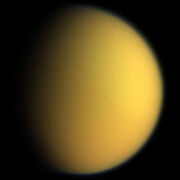
Titan
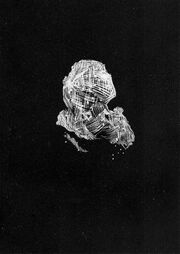
Hirrokin
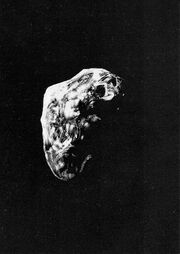
Sutungr
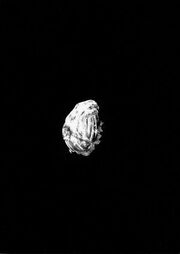
Kiviuk
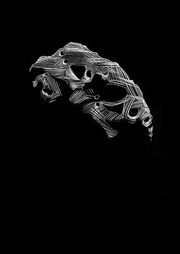
Tarqeq
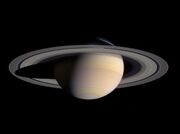
Saturn 2014

Epic Rings :) And Saturn
| Saturn | |
|---|---|

| |
| Name of Planet | Saturn |
| Number of Sattelites | 82 |
| Discovered by | Galileo Galilei, scientist to discover Jupiter's Galilean moons |
| Date of Discovery | 1610 |
| Atmospheric Makeup | 95.5% hydrogen 2.5%helium 0.35 methane 0.009% ammonia |
| Distance from Sun | 866.5 million miles |
| Diameter | 75,335 miles 120,536 kilometers |
| Axial tilt | 26.726 degrees |
| Orbit | 30 Earth years |
| Position in Solar System | Sixth planet from Sun |
| Surface Features | Gaseous surface with common dust storms, and rings |
| Albedo | (geometric) 0.465 (bond) 0.342 |
| Aphelion | 945.83 million miles |
| Perihelion | 845.98 million miles |
| Mass of Planet | 5.685 x 10^26 kg |
| Escape Velocity | 35.5 kilometers/second |
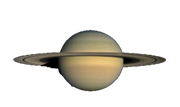
Saturn Cut image
Hey, wait for Perseverance!
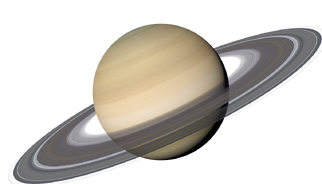
Saturn with rings, as shown with Cassini probe.
This article has new features. For example, originally the discovery line said "Galileio Galilei."

Saturn's strangest moon, Titan, as taken by the now-landing Huygens rover.
The planet Saturn is the sixth planet from the Sun. It is the second largest planet in the Solar System, along with having the most moons. Saturn is most famous for its complex ring system, which are made mostly of ice chunks and crystals.
Atmosphere
The atmosphere of Saturn is extremely dense and thick. So thick, the atmosphere makes up about 45% of Saturn itself. The atmosphere stretches downward from the purplish-blue, hexagonic northern pole. The atmosphere stretches down about forty five percent of the way to the core of Saturn itself. Below the atmosphere is metallic hydrogen and molten rock.
The atmosphere is mainly consists of hydrogen and helium. The rest include phosphorous, germanium, carbon, ammonia, and other trace elements.
Orbit and Rotation
Saturn is about 9 times the distance from the sun than the Earth. Therefore it takes much longer to orbit the Sun than the Earth, taking approximately thirty years to orbit the sun.
Saturn is a jovian planet/one of the gas giants, therefore it rotates on its axis much more quickly than the inner rocky planets. Saturn takes approximately 10 hours and 30 minutes to make one rotation on its axis. Since Saturn rotates on its axis extremely quickly, this causes the planet to distort its shape. Saturn distorts at the poles and bulges toward the equator.
Rings
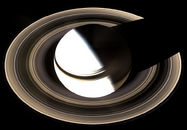
The rings of Saturn, as taken by Voyager 2.
Saturn's ring system is the most complex, most massive and largest of all of the rings of the other gas giants in the Solar System. The rings of Saturn encircle the entire planet at exactly the equator. The rings measure about 288,000 kilometers in diameter, yet measure about 47 1/2 meters in thickness, about half the length of a US football field. Therefore, these rings can only be seen with high-powered and large telescope.
It is theorized that Saturn's rings formed from a former satellite around 100 million years ago when a large asteroid destroyed the moon and caused it to get obliterated and shatter into a ring. The leftover debris from this impact also clumped together to form Tethys and Enceladus.
Because the rings are so thin, every 14 ~ 15 years, when Saturn periodically turns its rings edge on Earth, the rings can actually visibly disappear when viewed with a small telescope. This event is referred to as a "Ring Plane Crossing".

Saturn during Ring Crossing Event
Formation
Saturn's core formed as a clump of rocky material and particles that remained from the formation of the Sun and Jupiter. Saturn's core was a super-earth about 10 times Earth's mass.
However, because of the abundance of gaseous materials scattered everywhere in the Solar System, Saturn's gravitational pull attracted huge amounts of particles and gas that led to the thickening of its atmosphere, eventually becoming a Jovian gas giant.
Discovery
Though Saturn was first discovered, along with neighboring planet, Jupiter, by Galileo Galilei, his telescope, known back then as a spyglass, was not powerful enough to spot these rings. It was not until seventeen years later that a Dutch astronomer named Christian Huygens would later use a more poweful telescope to discover that Saturn was surrounded by a flat ring.
Composition
The rings of Saturn is not one ring, as suggested by Huygens, but actually made up of three main rings: The A, B, and C rings (also known as the Crepe ring). The A ring is the ring farthest from the planet of Saturn, though the recently discovered F ring is supposedly farther from the planet than the A ring. The A ring consists of the smaller rock particles, such as those as small as marbles. The whitest and brightest ring is the closer B ring. This ring contains chunks of ice the size of houses and buildings. The A and B rings are separated by the Cassini Division, a 4800-kilometer wide gap between these two rings created by gravitational influences, or resonances with Saturn's moons. The ring closest to Saturn is the faintest ring, the C-ring, also known as the Crepe ring, due to it representing a nearly transparent fabric known as crepe ring.
| The Planets and Dwarf Planets | |
|---|---|
| Planets | |
| Mercury • Venus • Earth • Mars • Jupiter • Saturn • Uranus • Neptune | |
| Dwarf Planets | |
| Ceres • Pluto • Haumea • Makemake • Quaoar • Eris | |